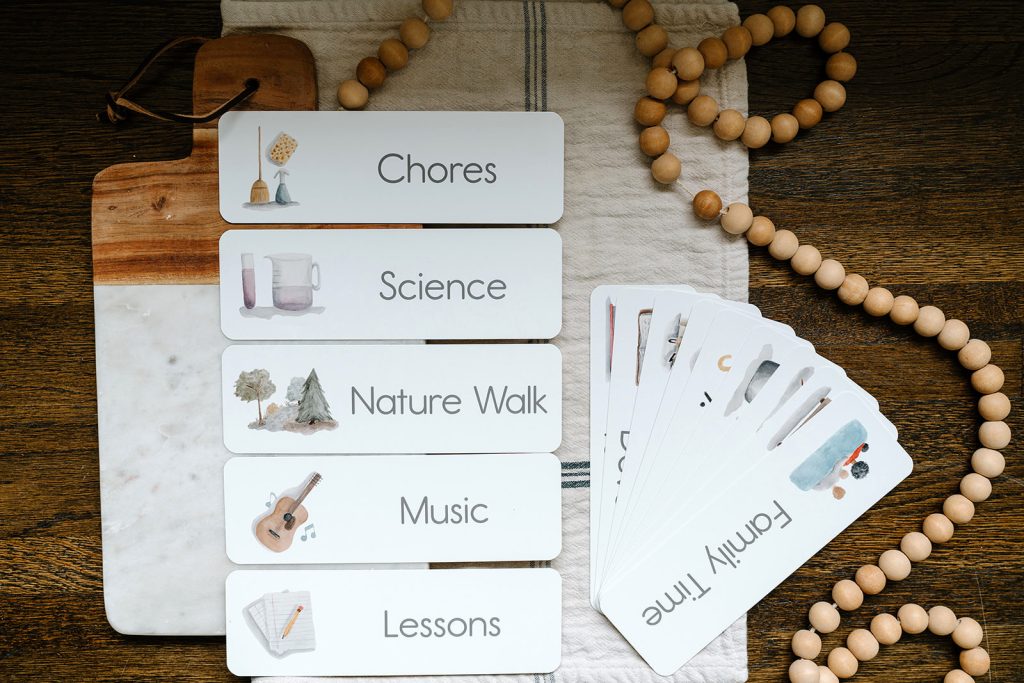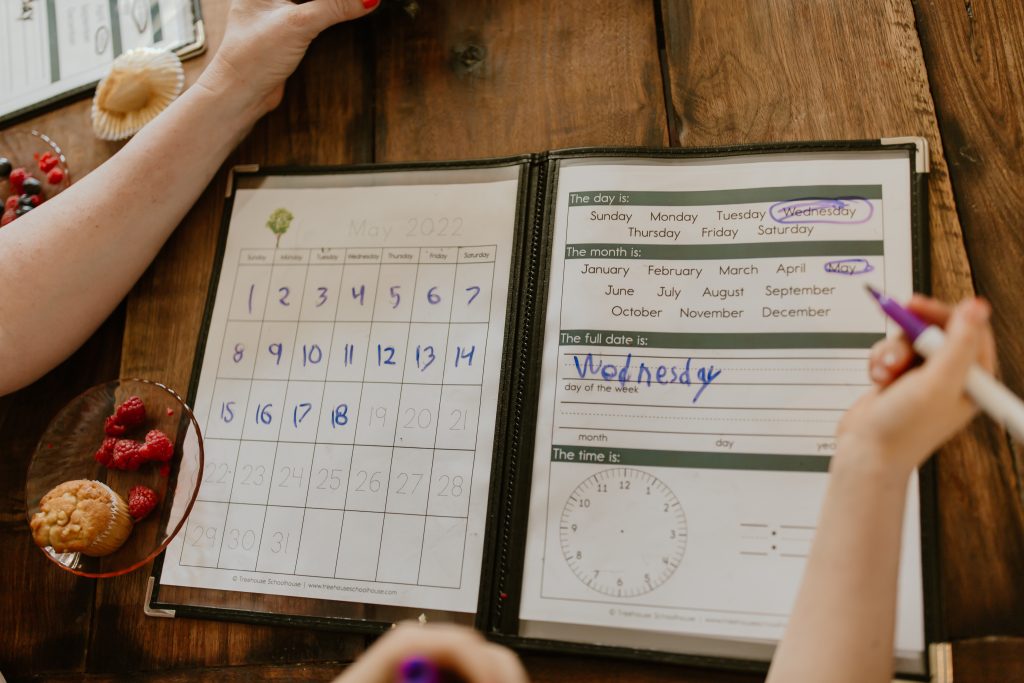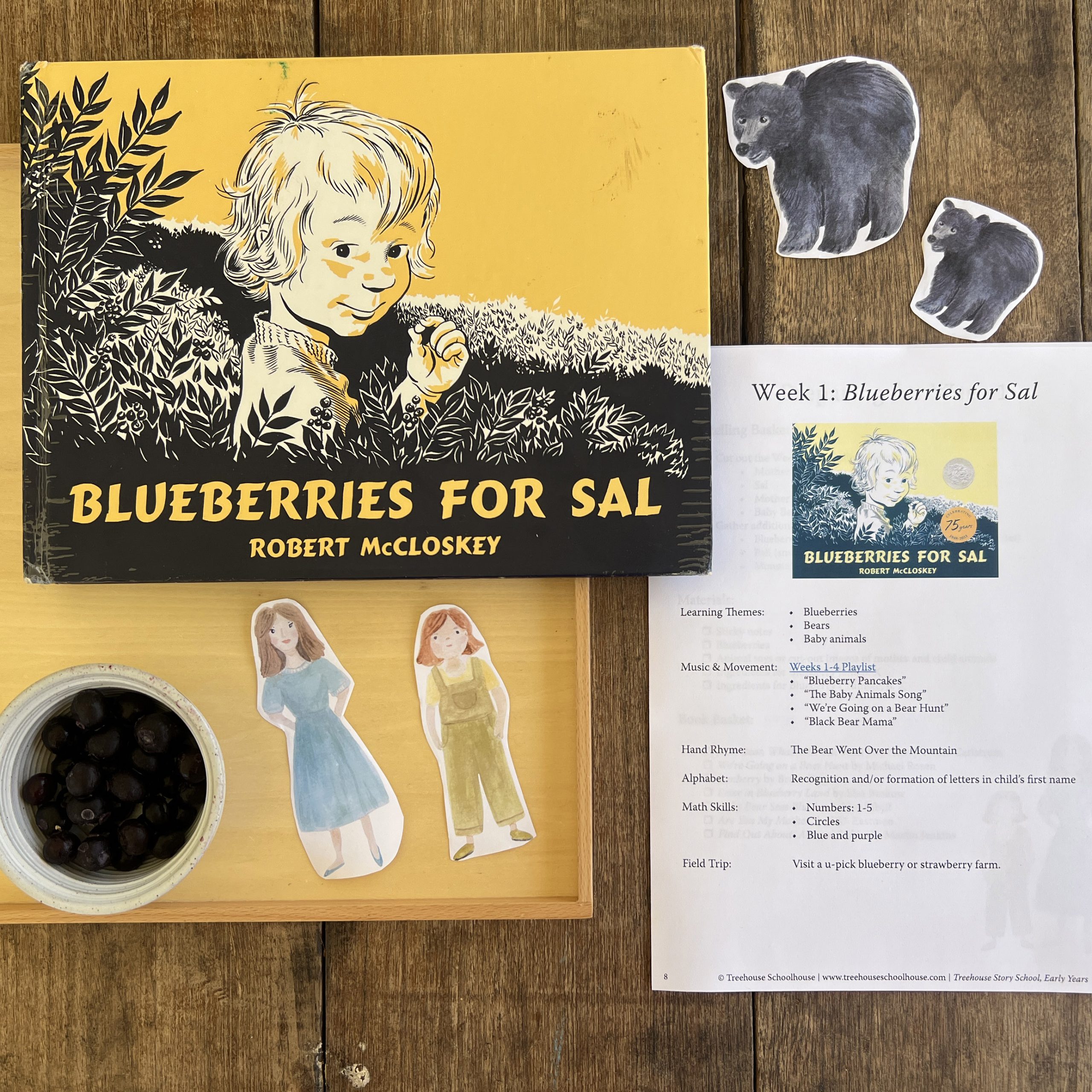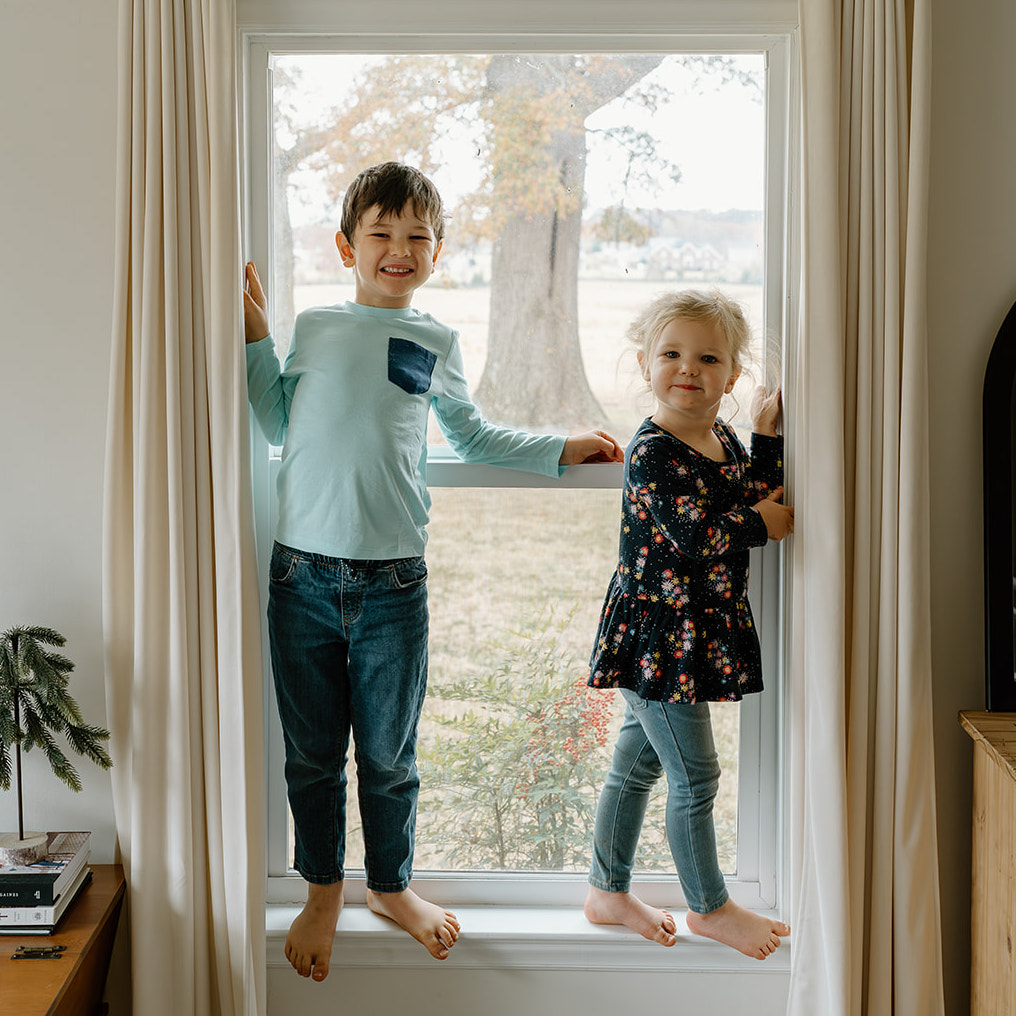I first discovered 3-part cards when researching the Montessori method of schooling. The official name for these cards are “Nomenclature Cards” – coming from the Latin word nomenclatura, which means “assigning of names.” Three-part cards can be used in every subject area. The main purpose is for vocabulary building and reading.
Three-part cards are essentially an image with a corresponding label. They can be in whole form, where the card includes both the word and image together on one card, or in split form, where the word is separated from the image. Split 3-part cards allow for endless opportunities for matching and word recognition.
This blog explains what 3-part cards are and how you can use them in your homeschool.
In this blog post:
- Why we began using 3-part cards in our homeschool preschool
- How to use 3-Part Cards
- Favorite preschool resources from Treehouse Schoolhouse
Why we began using 3-part cards in our homeschool preschool

When my oldest son was learning in the preschool years, we were were looking for learning resources for reading and learning the names of things around us. We first began using 3-part cards with inspiration from Simply Learning. I saw my 3-year-old begin to put meaning to words, and I was amazed at how quickly he caught on to them. I truly believe that 3-part cards were a huge contributor to his early reading.
As my children were learning more words, I wanted a way to gently encourage them to learn about real-world animals and things they see in the world around them. I designed these 3-part cards with photos to introduce my children to real-world animals and items, aligning with Montessori teaching. This set includes a real-life animal or object for each letter of the alphabet.
How to use 3-part cards for preschool learning

Here are four ideas for using 3-part cards with your toddler or in your homeschool preschool.
- Basic matching of any combination. Item to picture, item to word, picture to picture, word to picture, and word to word. I often leave them out on our Tot Tray shelf for the children to explore on their own throughout the day.
- Movement matching. I also use movement games when we are matching, such as having them pick a word, complete a short obstacle course, and match the word to the picture at the end.
- Memory matching. Flip all of the cards face down and take turns flipping them two at a time to try to make a match. I suggest using the whole cards for this, so that they are constantly seeing the word as well. If you have a reader, you could do the same game but match the split picture to the word.
- Hide-and-seek matching. During sensory play, hide the split pictures in rice or lentils and keep the words on the table. For my younger daughter I will hide one form of the pictures and the other form of the pictures will go on the table. They will dig to find a picture and then find the correlating word on the table to match.
Favorite preschool resources from Treehouse Schoolhouse
Are you looking for more learning resources or learning material for toddlers or preschoolers in your home? Consider these best-selling products from Treehouse Schoolhouse that offer a gentle invitation to learning for small children.
Treehouse Story School: Preschool

Treehouse Story School: Preschool is 32-weeks of gentle, literature-based curriculum designed for ages 2.5-5 years. This preschool curriculum that invites children to learn through the themes in stories they love. Each week will focus on a picture book, inviting children into connection and learning through music and movement, play-based narration, alphabet and number play, motor skills, practical life development, crafts, and baking together.
It would be a great fit for your toddler or preschooler if you are looking to incorporate multi-sensory, play-based learning while introducing them to timeless stories.
From toddler through upper preschool, this curriculum can be used year after year as you dive deeper into beloved, classic stories your family will cherish.
Stay tuned for more details – coming this summer! Preview a free week here.
Daily Rhythm Bundle

Children are highly visual–they can feel particularly out of control when they don’t know what to expect of their day. That’s why we recommend using a visual schedule to support your children from the time they are very young.
Rather than trying to stick to a rigid schedule, this set helps you create a general rhythm for your days. The daily rhythm worksheet is laminated and dry erase and the cards can be moved around offering you flexibility and adaptability.
Morning Time Bundle

This interactive, reusable set focuses on weather, seasons, moon phase, temperature, weather-appropriate clothing, date and time, and reading a calendar. With this daily bundle, your child will practice the skills of handwriting, tracing, copywork, and telling time. I recommend you print these materials and place them inside of a Morning Time Menu or dry-erase sleeve. Using dry-erase markers, your child can fill this bundle out over and over again.
We also offer a version of the Morning Time Bundle for those in our community who live in the Southern Hemisphere.
There are endless ways to use these simple cards and I know over time I will continue to find new ways to use them to engage my little ones. How do you use them? Share your favorite ways in the comments below.

![Creating a Daily Preschool Schedule [Quiz and Schedule PDF]](https://storage.googleapis.com/treehouse-schoolhouse-media-dev/0c19c1c0-gtb2408.jpg)

